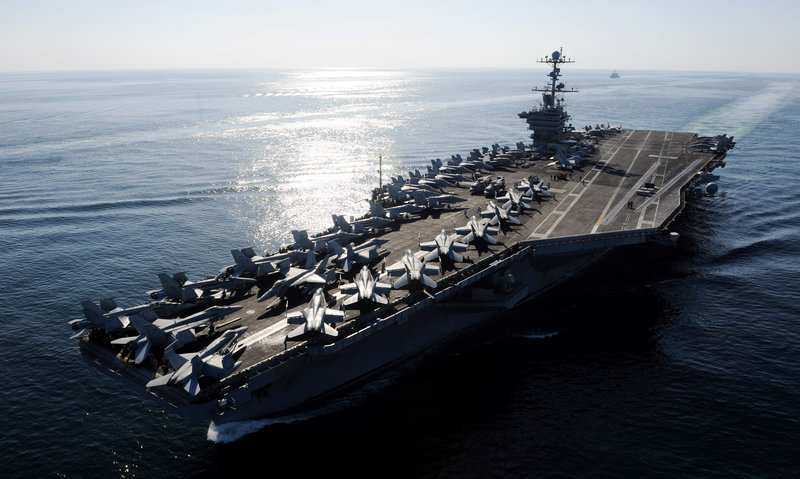WASHINGTON – America’s Navy is stronger, smaller, more dominant, more vulnerable and more lethal than at any time since World War I. So, for those confused by dueling candidates on the topic during Monday night’s presidential debate, we hope that’s cleared up things.
If not, it’s because determining naval strength, while never simple, is exceedingly complicated in these complicated times. All-of-the-above answers can be easily found among those who study the U.S. Navy. Sometimes, a single expert will voice many of the contradictions in the same statement.
For what they’re worth, the raw numbers: The Navy today has 286 ships. In 1916 it had 245, and by 1917, 342. By the end of World War II, it had 6,768 ships. At the height of the Cold War in 1987, the Navy boasted 594 ships. The recent low point came in 2007 when it had 278 ships.
For what it’s worth, in 1886, the Navy had only 38 ships, the most common of which were “screw sloops.” The modern Navy doesn’t list any screw sloops.
But when looking at the numbers, Jacob Stokes, a researcher at the Center for a New American Security, notes that it’s important to remember that when the U.S. force reached its peaks, there was always a similarly armed foe: Germany, Japan, the Soviet Union.
“Today, we don’t have a peer competitor,” he notes. U.S. naval superiority today is unquestioned. No other nation has more than two operational aircraft carriers. The United States has 11, and the other nations with two are Italy and Spain. China, the frequent foil in this discussion, just launched its first carrier but does not yet have planes capable of landing on it, and it does not yet have a single “carrier battle group.”
“China won’t be showing up on the California coast any time soon,” Stokes said.
Max Boot advises Republican nominee Mitt Romney on defense issues, though his position is more nuanced than probably suits a presidential candidate during a debate.
When asked to gauge the strength of the Navy, Boot noted that it “is incomparably stronger today than it was in 1916. But today’s Navy doesn’t have to fight the Navy of 1916.”
He notes potential enemies, China and Iran, and pirates. The threats he notes include terrorism, missiles and cyberweapons (none necessarily specific to naval power).
“No question, the quality of our ships today is the highest it’s ever been, but at some point quality can’t substitute for a lack of quantity, and that’s the situation we’re in today,” he argues.
The threat today’s Navy faces is multifaceted. But the Navy can also rely upon a multifaceted network for response, including air support, missiles, unmanned drones and satellite intelligence.
James R. Holmes, an associate professor of strategy at the U.S. Naval War College, notes: “We judge naval combat power on a relative scale. … That’s why ‘the Navy is smaller than it has been since 1917’ and ‘the Navy is bigger than the next 13 navies combined’ both contain a grain of truth but are basically factoids. Numbers count; the tonnage of ships counts; but these one-liners tell us little.”
The reality of the modern world is that the Navy is very unlikely to be engaged in a traditional high-seas battle. Instead, potential battles would be close to land, meaning that naval power (on both sides) would have to include air power, ground power and missile capacity.
Iran cannot match American naval power, but it can pose a potential threat if, near a coast, it uses smaller boats to “swarm” more powerful but less numerous U.S. ships.
“You also have to be careful about just counting hulls,” Holmes notes. “A nuclear-powered aircraft carrier counts as one hull; so does a minesweeper.”
Michael O’Hanlon, an expert on security with Washington’s Brookings Institution, said that while it is obvious there is no comparable naval threat, it’s important to remember the world can change, quickly.
Japan hid an attacking force behind a thunderstorm to launch its attack on Pearl Harbor. Today, the Navy would rely on satellite intelligence for early warning.
“But one consideration is that a foe in the future might have the ability to put satellites out of commission,” he said. “It’s possible that this 20-year period will be viewed as a vacation from history.”
Send questions/comments to the editors.



Comments are no longer available on this story